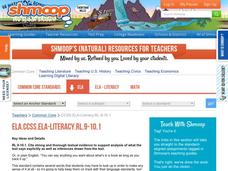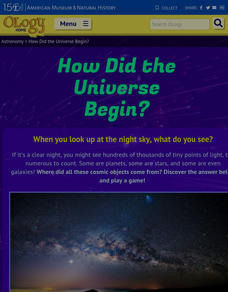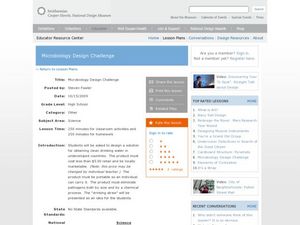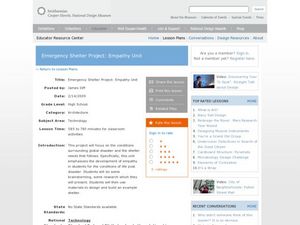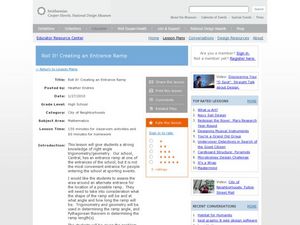Shmoop
ELA.CCSS.ELA-Literacy.RL.9-10.1
Does your ELA class need some practice with the specific skills outlined in the Common Core standards? Then this is the perfect resource for you! One in a series of connected lessons that cover the standards for reading literature,...
Illustrative Mathematics
Guess My Number
Make a game out of solving equations. This particular activity works well for pairs of learners. Follow the instructions to have player one pick a number and player two verbally give an equation. Participants need to make sense of a...
Exploratorium
Beyond Dominoes: Polyominoes
Dominoes, polyominoes, tetrominoes, and pentominoes are the subject of this interesting math activity designed for middle schoolers. Pupils cut out shapes that are embedded in a worksheet in the plan, and experiment with them by taping...
Biology Class
Scientific Method Worksheet
Knowing the names of the steps of the scientific method is not enough; in order to really understand each of the elements, one must practice. Beginning with an engaging recap of the steps of the scientific method, learners practice the...
Lake Middle School
Cornell Notetaking
The beauty of this colorful presentation about Cornell notes is that it begins with a very powerful statistic: "Those who take organized notes and do something with them remember 90-100% of the material indefinitely!" Zounds! Now there's...
Julie Negrin
How to Teach Cooking to Kids
Youngsters are more likely to eat something if they've worked hard to make it! Plan a cooking class with an e-booklet from Julie Negrin, author of Easy Meals to Cook With Kids. It includes what you should consider about your school site...
Virginia Department of Education
Thermochemistry: Heat and Chemical Changes
What makes particles attract? Here, learners engage in multiple activities that fully describe colligative properties and allow the ability to critically assess the importance of these properties in daily life. Young chemists conduct...
Talking with Trees
Empathy
Strengthen the skill to empathize with others with a worksheet that challenges scholars to match emotions—including happy, confused, sad—to one's body language.
Teach Engineering
Corn for Fuel?!
Can corn power the world? Young scientists learn about how corn and other plants can provide renewable biofuels in the second of nine lessons. They set up an experiment to investigate how different variables affect plant growth. All of...
California Education Partners
Lashelles Garden
Let knowledge grow bountifully like plants in a garden. Given a diagram of a rectangular garden split into plots, scholars determine the area of the entire garden and the areas of the individual plots. As a culminating activity, they...
American Museum of Natural History
How Did the Universe Begin?
The Big Bang Theory is more than a television show. Pupils read how Edwin Hubble observed other galaxies and noticed that the galaxies are moving away from each other. Scholars learn about the idea of the big bang and what happened next...
Curated OER
Amelia Bedelia's Idioms
Third graders investigate idioms by listening to Peggy Parish's, Amelia Bedelia. They make a list of the idioms in the book, add to the list, and then chose one to illustrate. They make a class book using the illustrate idioms.
Curated OER
Those Cells Look Good Enough to Eat
Students explore the parts of the cell. In this cell lesson, students use foods to create cell models that represent the nucleus, cytoplasm, cell membrane, mitochondria, ribosomes, vacuoles, endoplasmic reticulum, and Golgi bodies...
Curated OER
Using O. Henry's the Ransom of Red Chief To Develop a Larger Vocabulary
Ninth graders expand their reading vocabulary in order to increase comprehension. They play a game using vocabulary from a novel.
Curated OER
Healthy Computer Ergonomics
Students identify, demonstrate properly, and apply correct position and posture while working at the computer. They also demonstrate optimal posture and position at the computer workstation, including: sitting up with the arms held out...
Curated OER
My Favorite Things
Pupils identify "masterpieces" and mass-produced objects. They explain why they value a given object and determine what physical materials were used to create the objects. They create a class book featuring objects that they value.
Alabama Learning Exchange
Environmental Scrapbook and Podcast
High schoolers collect newspaper and magazine articles about the environment and construct a scrapbook using construction paper, glue, and scissors. To make it even more environmentally friendly, groups can create an online scrapbook...
Curated OER
A Tall Ship and a Star to Steer Her By
Learners create a water transportation device powered by wind. In this wind power lesson, students research transportation concepts after reading the poem "Sea Fever" by John Masefield. Learners design the fastest sailboat they can...
Curated OER
Science TV: Making it Real
High schoolers explore the ways science is presented in a children's television show. Students conduct internet research, and then create and design a skit that highlights the problem-solving process.
Curated OER
Microbiology Design Challenge
Students discover dangers to human health by researching what's in our drinking water. In this water purification lesson, students discuss the conditions of water in undeveloped countries and why it is unsafe to drink. Students work in...
Curated OER
Emergency Shelter Project: Empathy Unit
Pupils design emergency shelters. In this designing emergency shelters lesson, students discuss living conditions of people after a natural disaster. Pupils discuss the tsunami that struck East Asia. Students design collapsible...
Curated OER
Changing the World: Social Entrepreneurs Part One
Students analyze the purpose of a social entrepreneur. In this entrepreneurship lesson, students create a "help wanted" advertisement and graphic organizer to provide information on how a social entrepreneur seeks long-term change by...
Curated OER
Roll It! Creating an Entrance Ramp
Students explore the concept of triangles. In this triangles lesson plan, students are to propose a plan for a ramp at their school. Students use the Pythagorean Theorem and trigonometry to determine the length, height, and angle of...
Curated OER
Archaeological Study
Students analyze the difference between archaeology and anthropology while studying the evolution of different products. In this archaeology and anthropology lesson, students trace the progression of a certain tool or product and come up...


